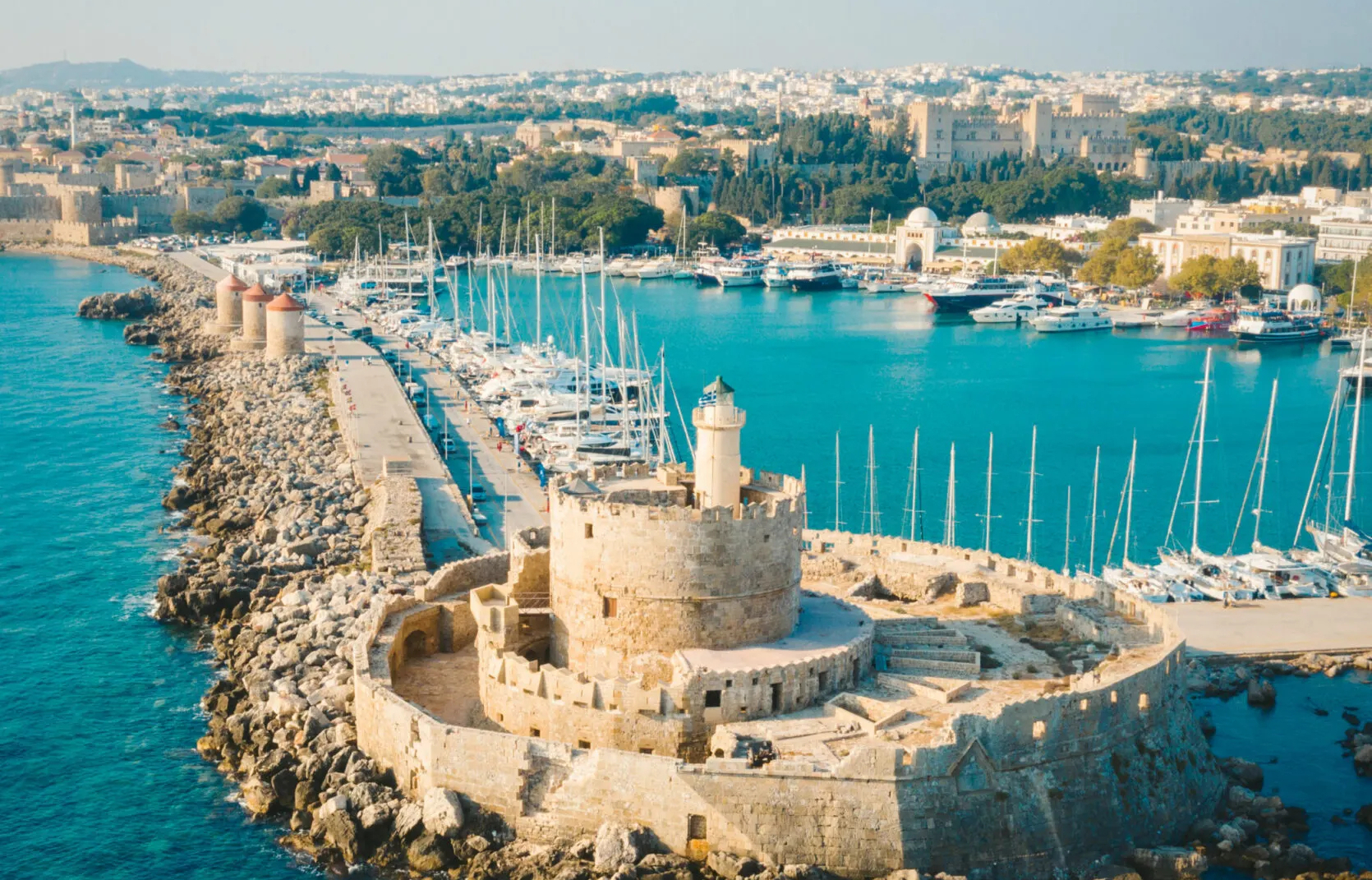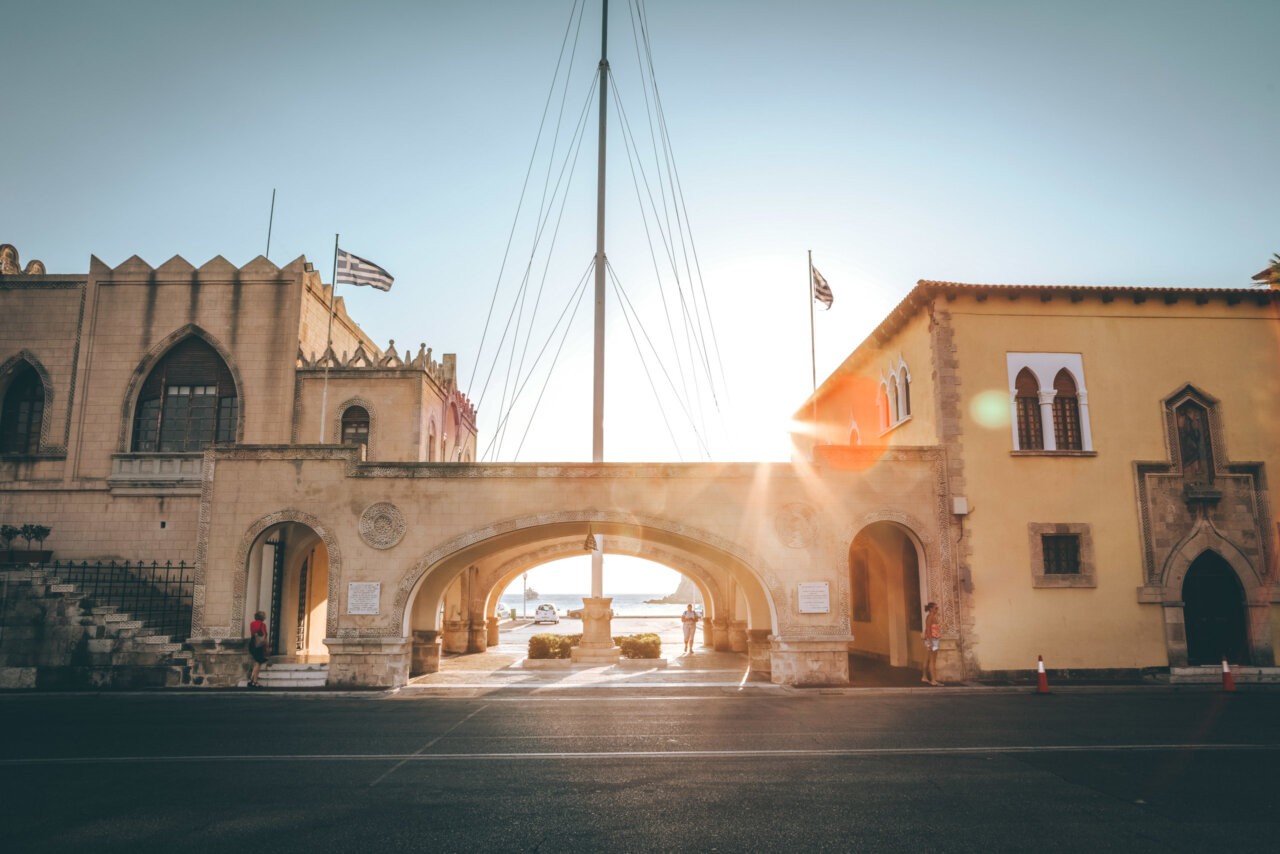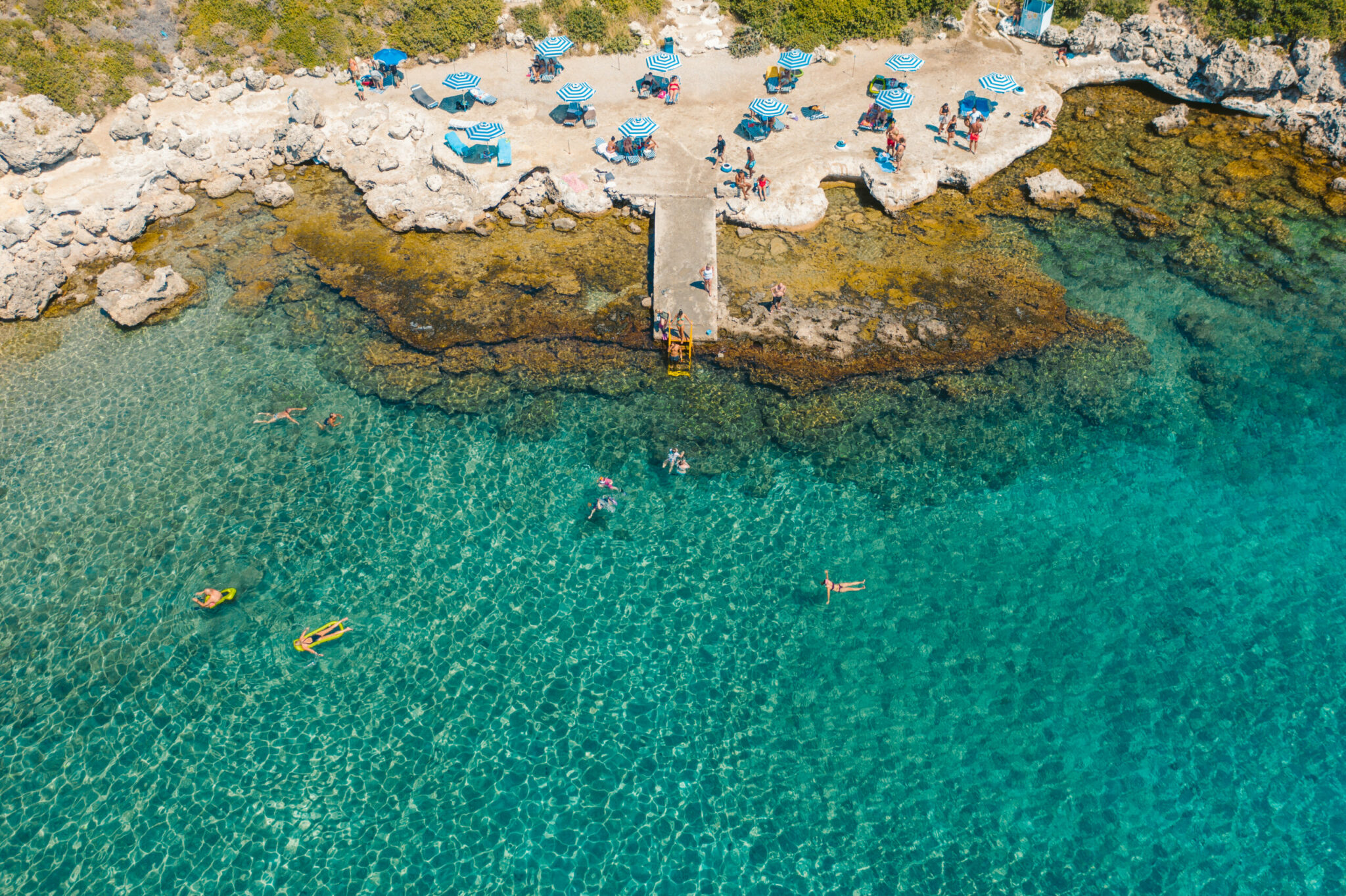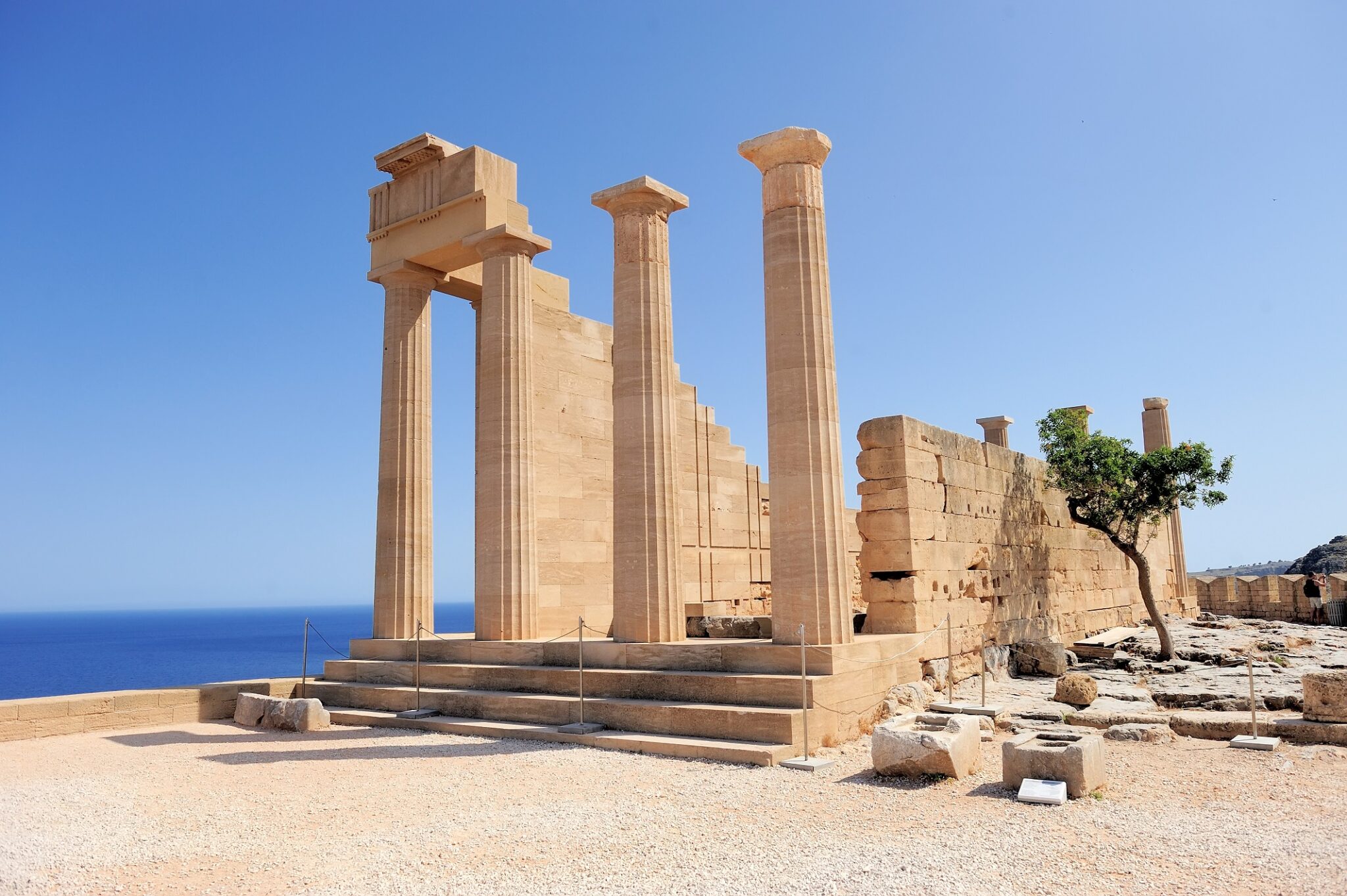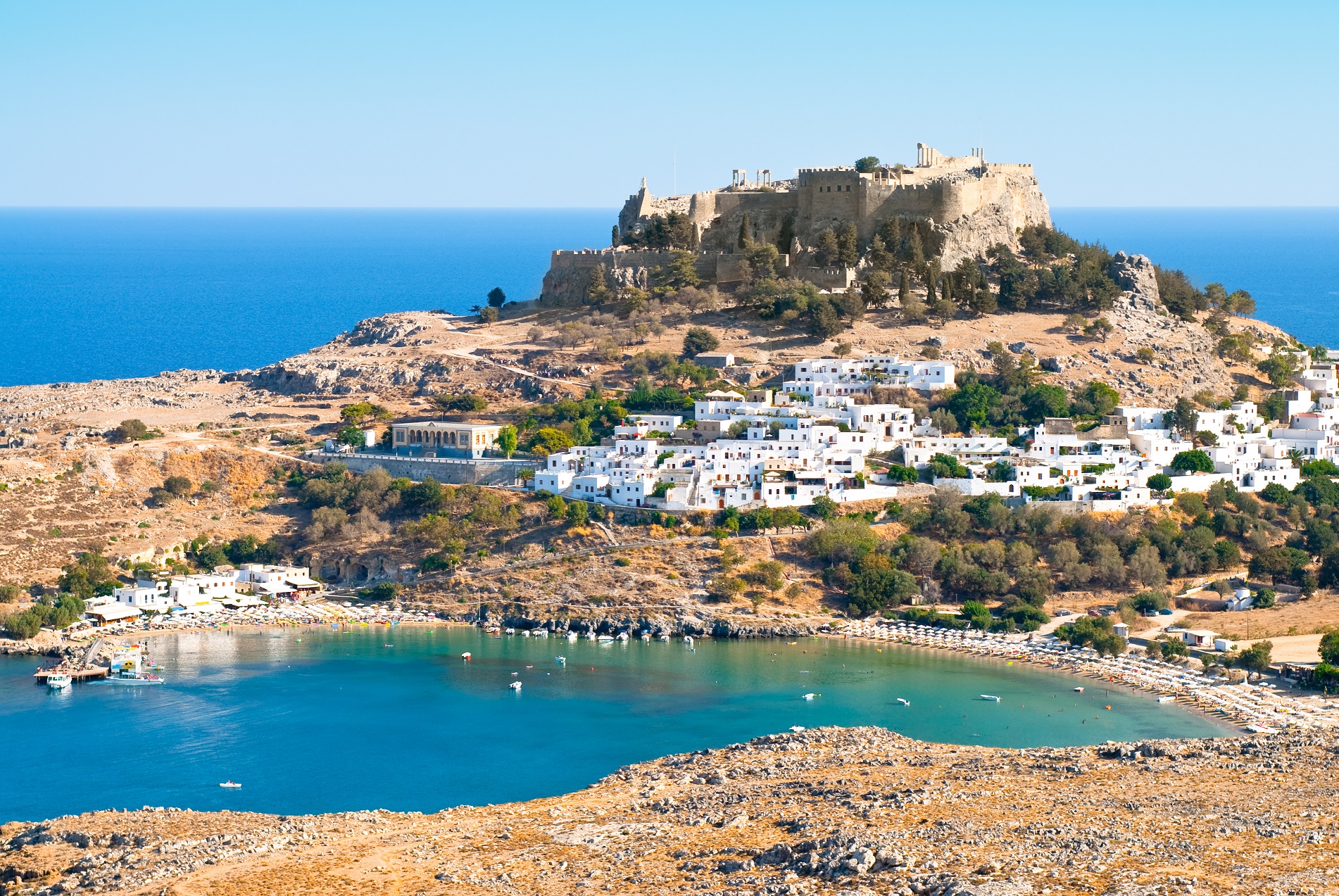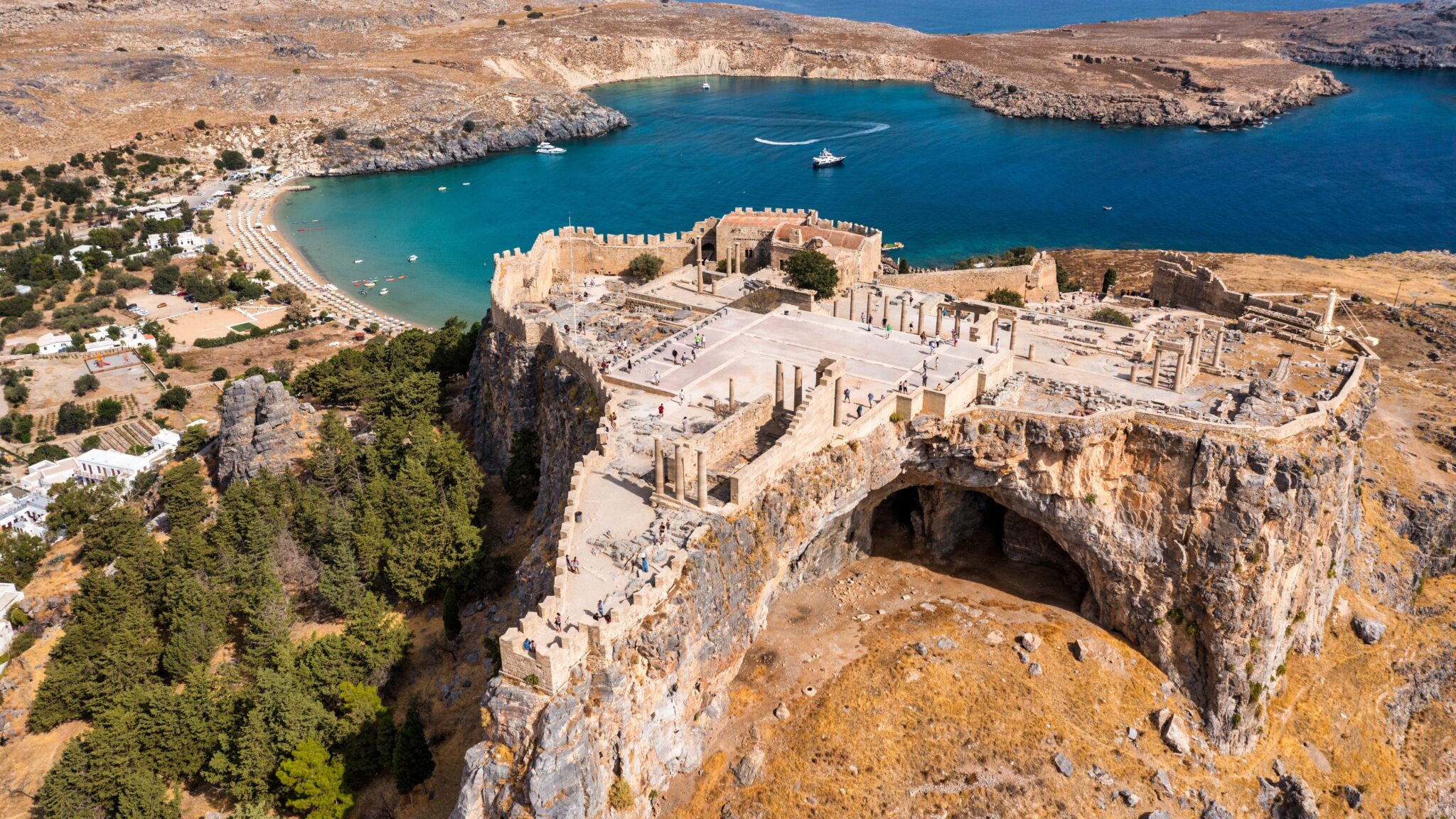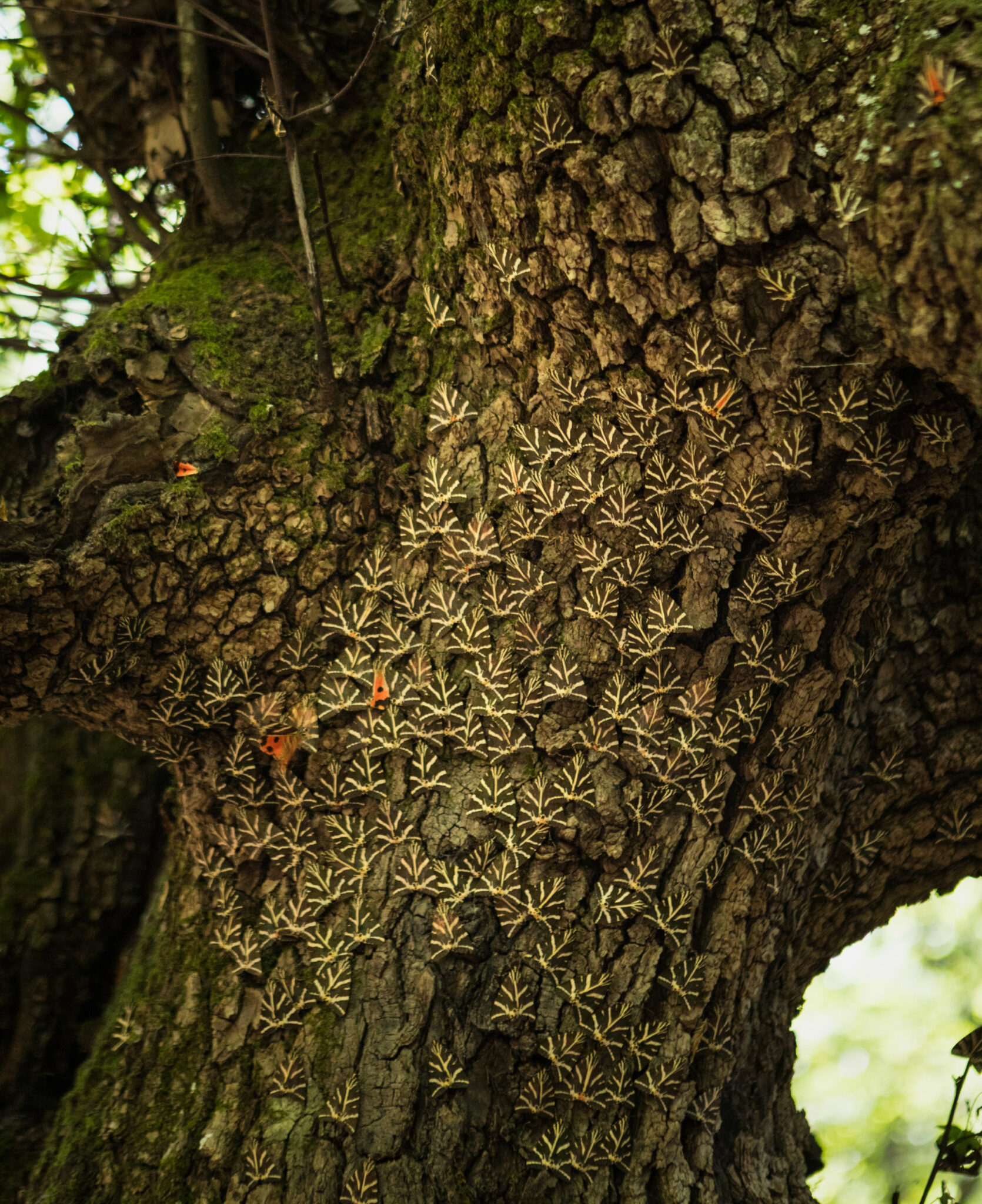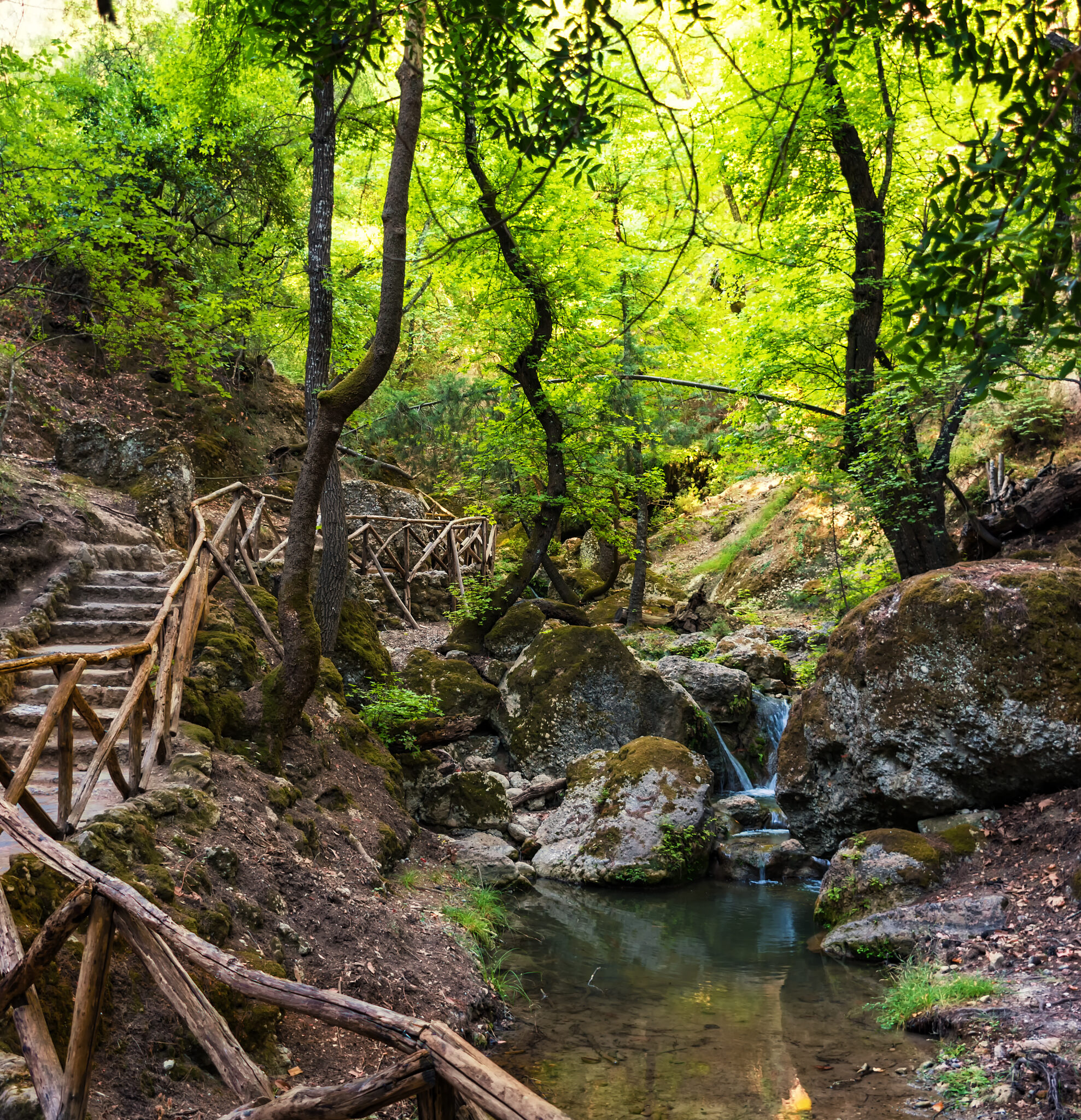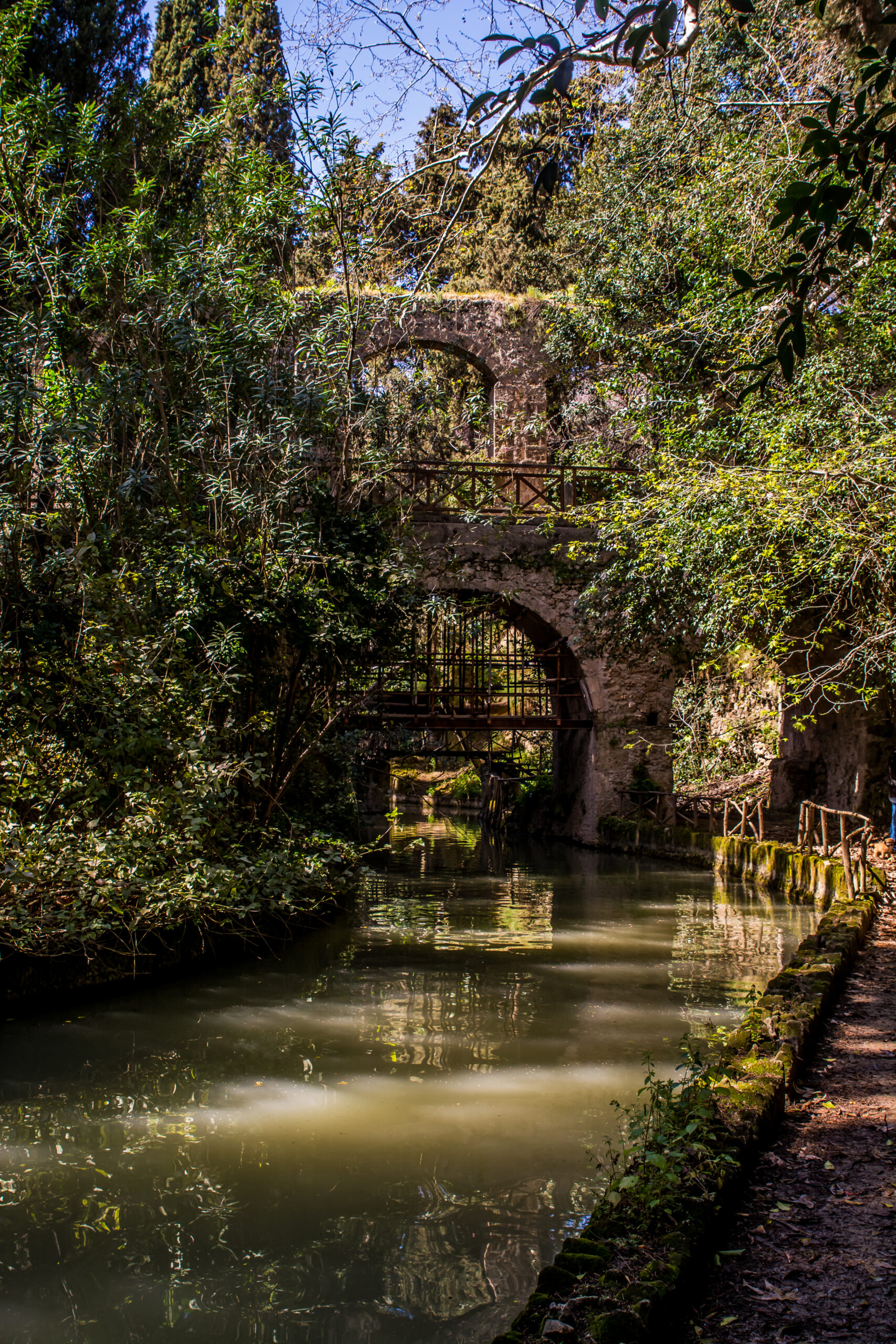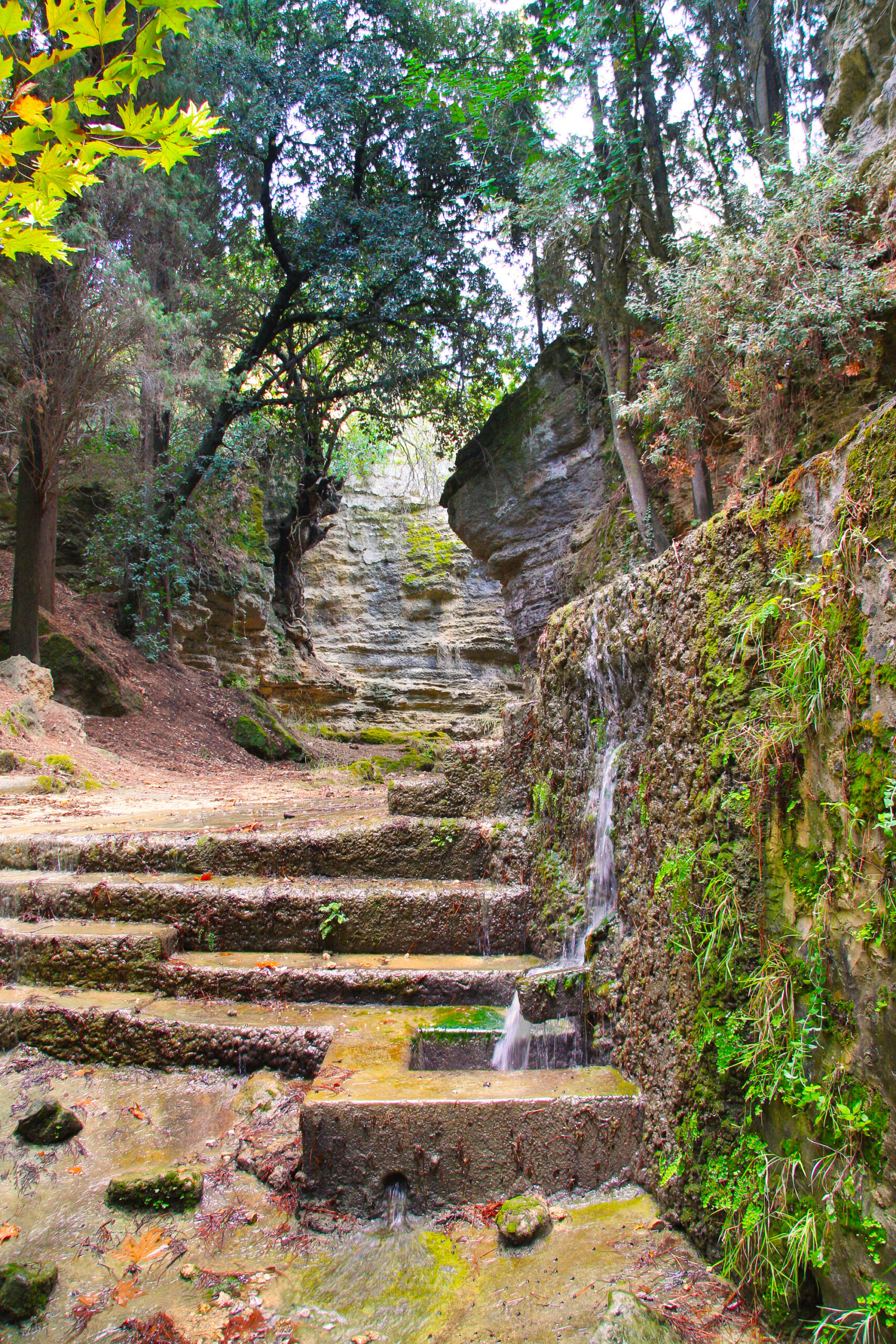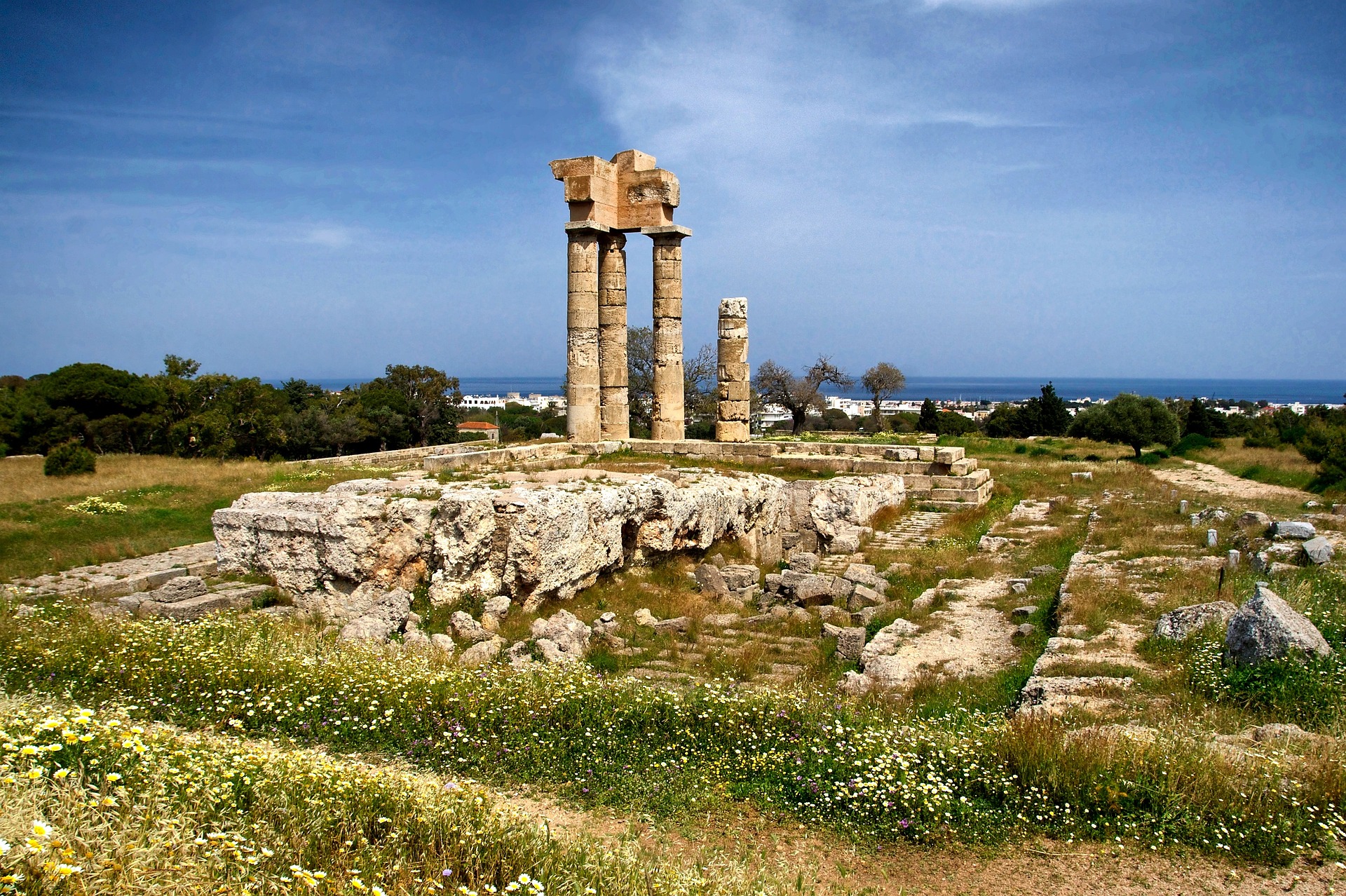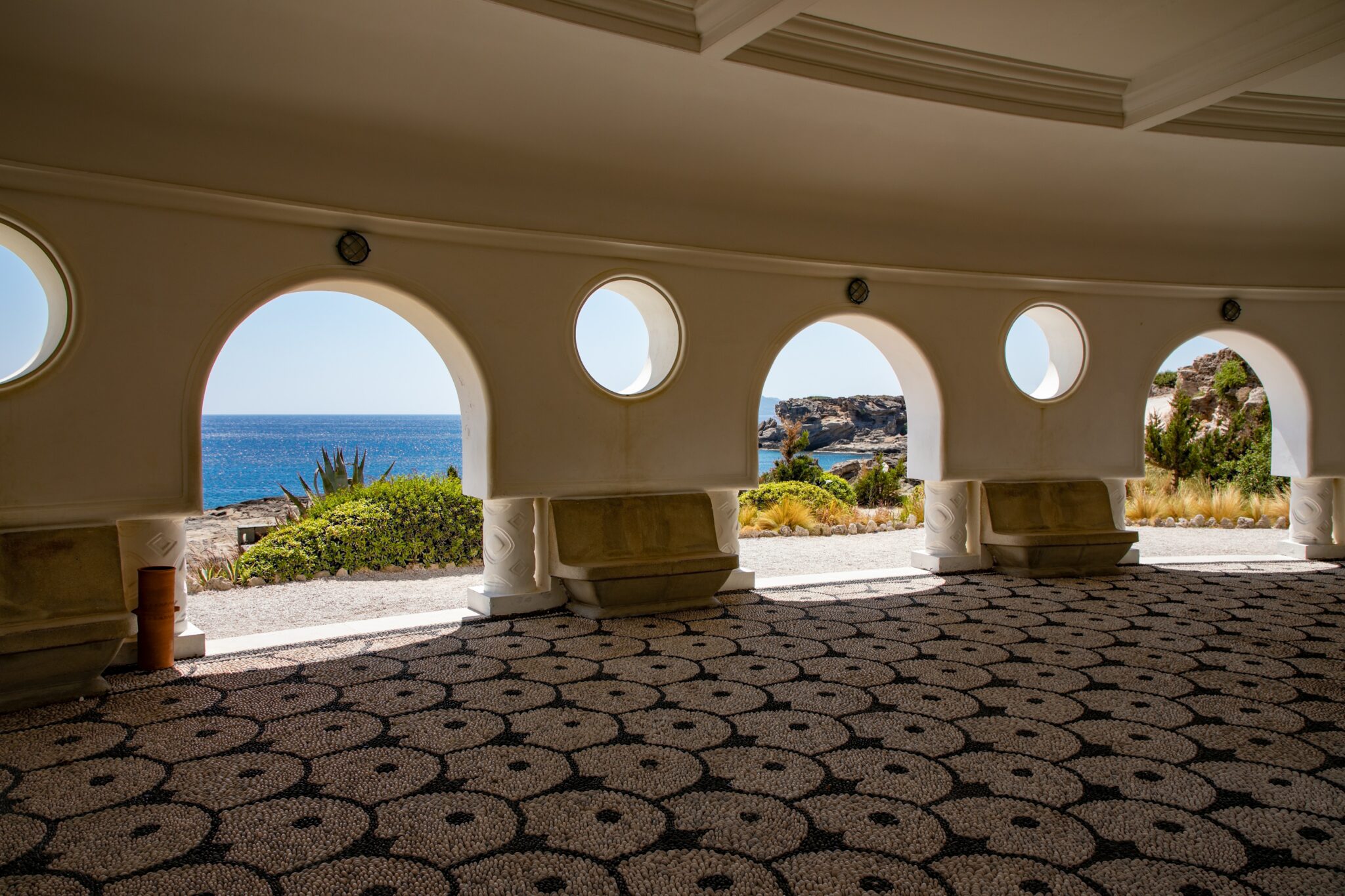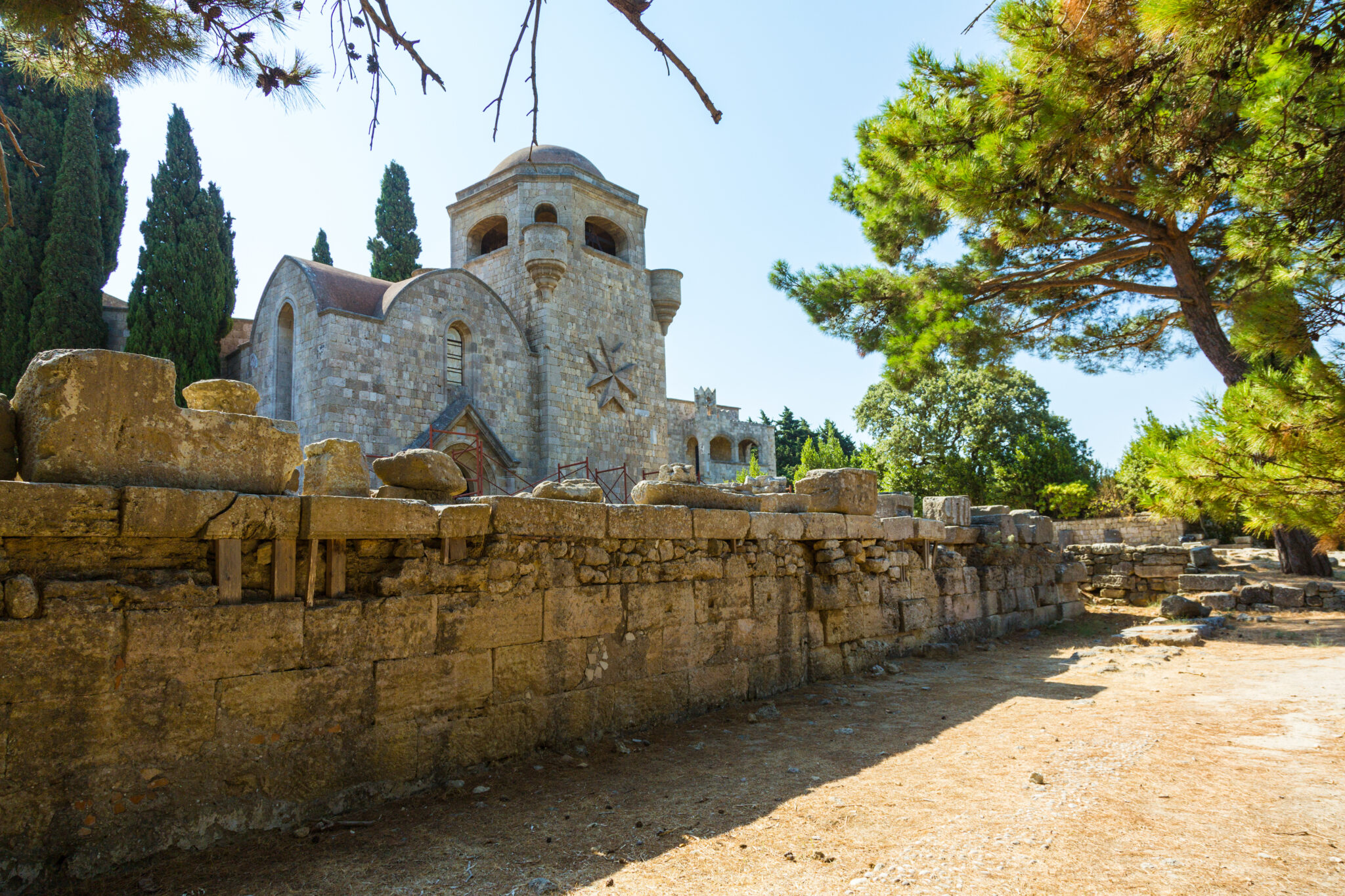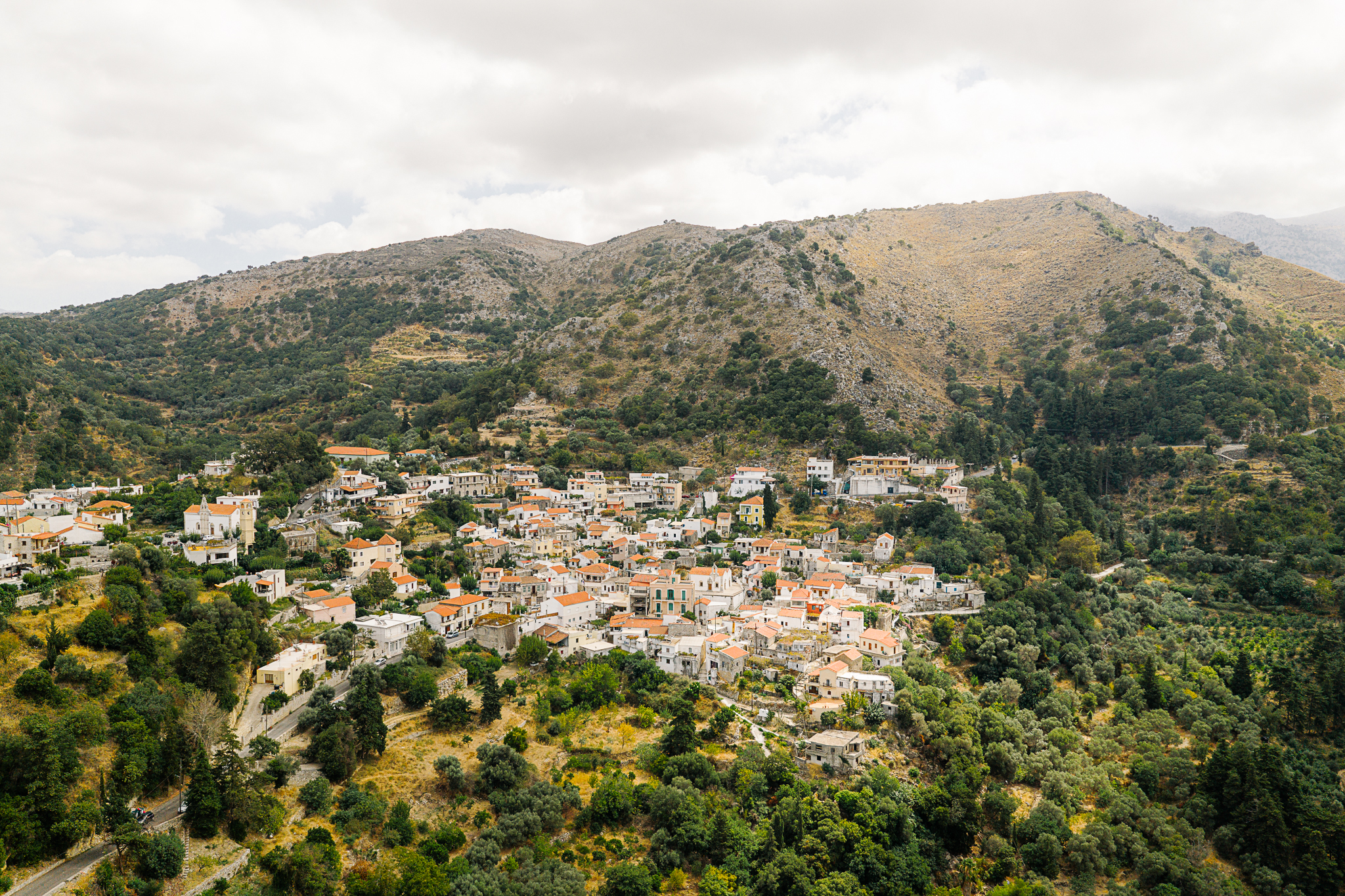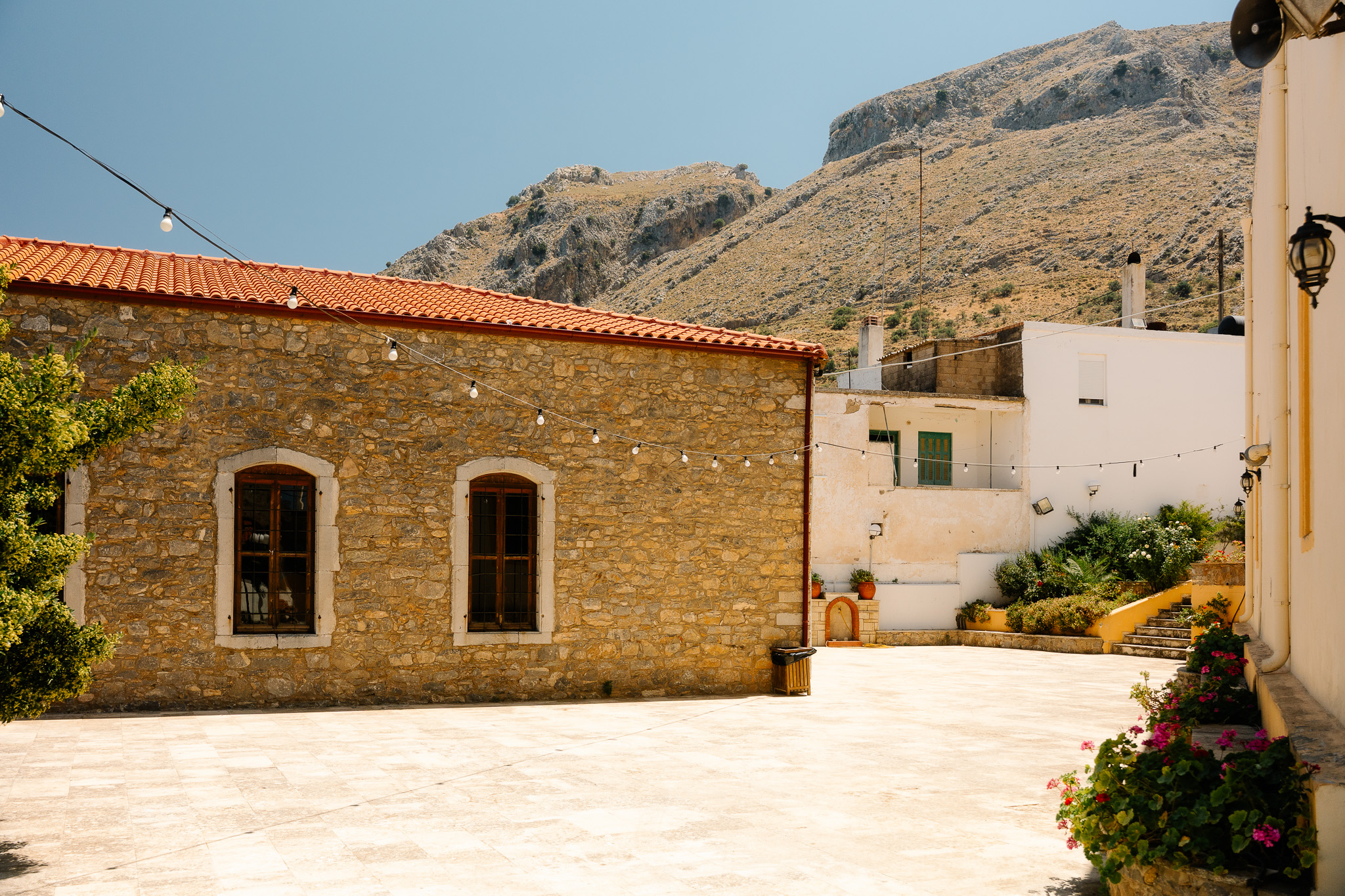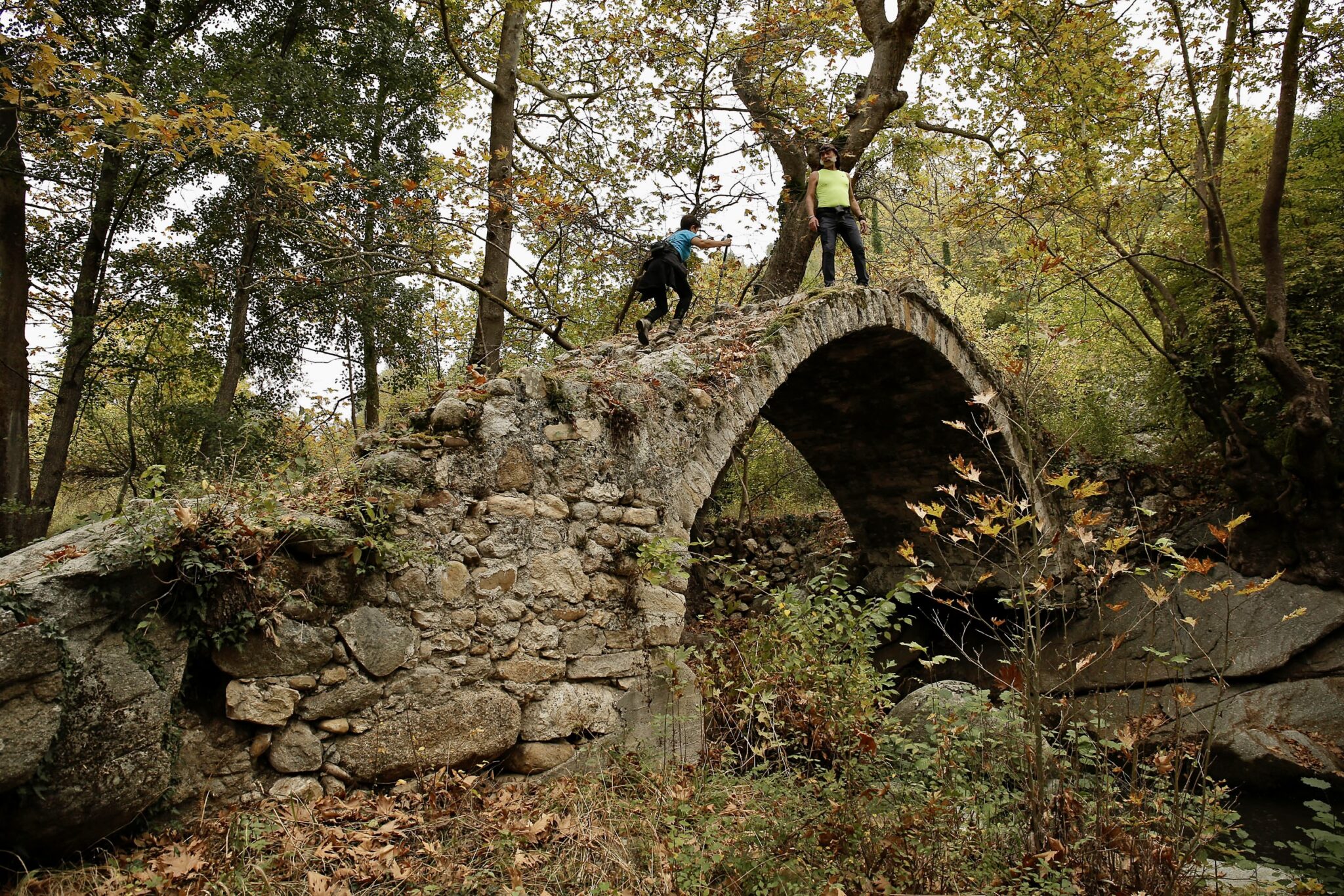In Rhodes, in addition to the wonderful beaches that stretch for kilometers around the undulating shores of the island, you’ll come across ancient settlements, medieval buildings and get a chance to admire natural monuments such as The Valley of the Butterflies or the dreamy Rodini Park, possibly the first landscaped of its kind in the world.
Keep in mind that many must-see attractions in Rhodes are located outside the main town, renting a vehicle is essential; consider a reputable car rental service for a smooth and worry-free experience.
Lindos
A riddle. “The father is one, the sons twelve, and each of these has twice thirty daughters of features twain; some are white and others are black, and though they be immortal they all perish.” Cleobulus (6th century BC) The answer is at the end of this little guide.
Thousands of tourists flock to Lindos every year, to admire its architecture, walk through the narrow alleyways, climb the acropolis and to swim and to sunbathe at its large seductive sandy beach. The area has been continuously inhabited since the Neolithic period. Lindos flourished between the 7th and 6th centuries BC, but began to decline after 408 BC, with the foundation of the city of Rhodes. The poet Cleobulus, one of the Seven Sages of antiquity, ruled the city for 40 years. Many maxims are attributed to him, including “Moderation is the best thing” and “Be fond of hearing rather than of talking”.
Map of Rhodes
In the early 1960s Lindos was discovered by hippies. At the height of its popularity, even the terraces were rented out, so many tourists were there. Many famous people started to visit – while others, like Pink Floyd guitarist David Gilmour, bought houses. Today the area of Lindos has countless rooms to let, hotels, souvenir shops and local produce. At night, taverns set up their tables on the terraces of the neighbouring houses, overlooking the illuminated castle. There are also many cafés, bars and clubs.
The older houses in the village were built between the 17th and 19th centuries. Among them stand out the captain’s houses and the Byzantine churches dating back to the 11th century. It is worth visiting the church of Panagia (1489-1490). Lindos is 46 kilometres (28.5 miles) from Rhodes and the journey there can also be made by boat. Several daily excursions depart from the city.
The Acropolis of Lindos
This was the most well fortified point of the island, rising above the settlement on top of a steep cliff. The area enclosed by the mediaeval walls stretches round 8,400 metres (27,560 feet). Climbing up to the acropolis you can see a ship’s stern carved into the rock. It is the work of the master sculptor Pythocritus, and dates back to the 2nd century BC. Pythocritus created the magnificent Nike of Samothrace which is on display at the Louvre.
At the top of the acropolis is the Doric temple of Athena Lindia (4th century BC), built on the ruins of an earlier temple. An oversized statue of the goddess was moved by Constantine the Great to the Constantinople Hippodrome, where it was destroyed by vandals in 1203. In the Acropolis you can see the Knights’ command post, a Hellenistic stoa (covered walkway) and the 13th century church of St. John.
The Valley of the Butterflies
In this heavenly setting, from June to September, butterflies appear in their millions, attracted by the sap of the Oriental Sweetgum trees in the valley. The Jersey Tiger Moths (Panaxia quadripunctaria) are common in other parts of the island where there is humidity (e.g. Salakos), but here they are in such proliferation they can cover entire tree trunks. The valley is host to ferns, plane trees, oaks,and pines. There is a small river with waterfalls, bridges, and pathways.
The Natural History Museum is also worth a visit with samples of the flora and fauna of the area, butterfly species, and an impressive hatchery. At the highest point of the valley is the monastery of Kalopetra, built in 1484. The Valley of the butterflies is just 26 kilometres (16 miles) from Rhodes town. It is open from 08:00 to 18:00 and tickets are 5 euros. Ano Kalamonas, tel: 22410 83090, https://butterfliesrhodes.gr.
Rodini
This landscaped park with running waters, ponds, bridges and lush vegetation is where the Grand Master of the Knights of St John built his cottage. You can walk along the paths, have a picnic, see the small zoo, or take a boat ride on the large canal which, until the 19th century, belonged to the working Roman aqueduct. Above Rodini is a Hellenistic mausoleum known as the Tomb of the Ptolemies. Rodini is 3 kilometres (1.9 miles)from the city of Rhodes.
The Acropolis of Rhodes
The hill of Agios Stefanos is the highest point in the wider area, and the acropolis, dominates the western and highest part of the city of Rhodes. It was not fortified, but monumental, and consisted of sanctuaries, large temples, public buildings and mysterious underground places of worship. It is said that the great mathematician/astronomer Hipparchus (190-120 BC father of trigonometry and the man who discovered the procession of the equinoxes) made his observations from here. In 1924, excavations revealed a Doric temple dedicated to Apollo Pythios (four restored columns stand upright today). An ancient stadium, also restored, lies beneath the temple of Apollo. Next to it you can see the Roman Odeon and Gymnasium, while to the north the remains of the Doric temple of Zeus Polias and Athena Polias have been found.
The archaeological site has undergone extensive reconstructions, both during the Italian occupation and, in recent years, by the Greek Archaeological Service. Concerts and events are held in the conservatory of the acropolis.
The Thermae (hot springs) of Kallithea
This exceptional building from 1929 is one of Rhodes’ most important attractions. It’s located a stone’s throw from the beach, integrated into the environment, and has been newly renovated. The “Little Rotunda”, designed by the Italian architect Pietro Lombardi, combines elements of the cultures that developed on the island. The main properties of the thermal spring waters of Kallithea are as a laxative and diuretic. This hydrotherapy centre was dedicated to drinking therapy.
Filerimos Monastery and the “Golgotha”
The monastery is 11 kilometres (6.8 miles) from the city of Rhodes, located next to the Acropolis of Lalyssos, and surrounded by lush vegetation. It is dedicated to the Virgin Mary of the Life-giving Source. According to one version, it was originally built by a monk who came from Jerusalem between the 11th and 13th centuries, living there as a hermit. Later, monks of the Franciscan order settled there. They made various additions to the buildings and began, on the basis of a secret recipe, to make the Sette Herbe (seven herbs), suitable for barostomache. The cobbled courtyard and the 15th-century Gothic stone church are well worth a visit.
To the east of the monastery is the castle of Filerimos and to the northwest the church of St. George (15th century). The ‘Golgotha’ is a path that leads to the other side of the hilltop to a 16-metre (52.5 feet) high cross, donated by the Lions in 1992. At intervals, to the right of the path, are 14 stone shrines. They are the work of the Italian Antonio Mairani. On each of them there is an engraved depiction of the Passion of Christ.
(A YEAR is the answer of Cleobulus’ riddle)
Read also:
8 stand out villages of Rhodes, the largest island of the Dodecanese



